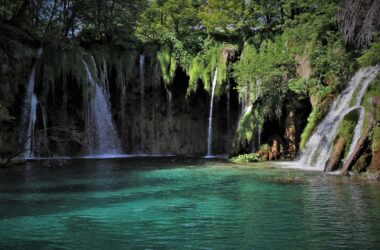Restoring Our Habitats: The world is a diverse place, with various ecosystems providing habitat for countless species. Unfortunately, many of these habitats are under threat from human activities such as land use change, pollution, and climate change. The loss of habitats can have devastating effects on biodiversity and the functioning of ecosystems, including the provision of ecosystem services such as clean water, air, and food. Habitat restoration, the process of returning a degraded habitat to a healthy state, is crucial for the conservation of biodiversity and the sustainability of ecosystems. In this article, we will explore the methods of habitat restoration and their importance for the planet.
- Ecosystem Assessment:
The first step in habitat restoration is to assess the current state of the ecosystem. This includes evaluating the extent of degradation, identifying the causes of degradation, and assessing the potential for restoration. Ecological surveys can help identify important habitats and species, and identify potential threats to their survival. A thorough assessment of the ecosystem is essential to developing an effective restoration plan.
- Habitat Enhancement:
Habitat enhancement is the process of improving degraded habitats to support the survival and growth of native species. This can include a variety of techniques, such as planting native vegetation, creating nesting sites, and controlling invasive species. Planting native vegetation is a key method of habitat enhancement, as it can provide food and shelter for wildlife, prevent erosion, and improve soil health. Nesting sites, such as birdhouses or artificial caves, can also be created to support the reproduction of wildlife. Controlling invasive species, which can compete with native species for resources, is also an important aspect of habitat enhancement.
- Habitat Creation:
Habitat creation involves the creation of new habitats to support the survival of species. This can be done by planting new vegetation, creating wetlands, or constructing artificial structures such as artificial reefs. Wetland restoration is a key method of habitat creation, as wetlands provide critical habitat for many species, including migratory birds and fish. Constructing artificial structures such as artificial reefs can also provide habitat for marine life.
- Habitat Management:
Habitat management is the ongoing maintenance of restored habitats to ensure their continued health and viability. This can include activities such as invasive species management, prescribed burning, and wildlife monitoring. Invasive species management is an ongoing process, as invasive species can quickly re-establish themselves in restored habitats. Prescribed burning can be used to maintain open habitats, such as grasslands and savannas, which are important for certain species. Wildlife monitoring can help assess the success of habitat restoration efforts and identify areas for improvement.
- Landscape-Scale Restoration:
Landscape-scale restoration involves the restoration of entire ecosystems or landscapes. This can include the restoration of watersheds, forests, or grasslands. Landscape-scale restoration is important because it can provide a more comprehensive approach to ecosystem restoration, ensuring that habitat restoration efforts are coordinated and effective.
Similar Article
- Sustainability in Corcovado National Park: A Model for Ecotourism
- Corcovado National Park: A Natural Wonder in Costa Rica
- Exploring Ecotourism in Costa Rica: A Sustainable Paradise
Conclusion:
Habitat restoration is a critical tool for the conservation of biodiversity and the sustainability of ecosystems. The methods of habitat restoration, including ecosystem assessment, habitat enhancement, habitat creation, habitat management, and landscape-scale restoration, are essential for restoring degraded habitats to a healthy state. By restoring our habitats, we can ensure a future where biodiversity thrives and ecosystems are sustained for generations to come.










